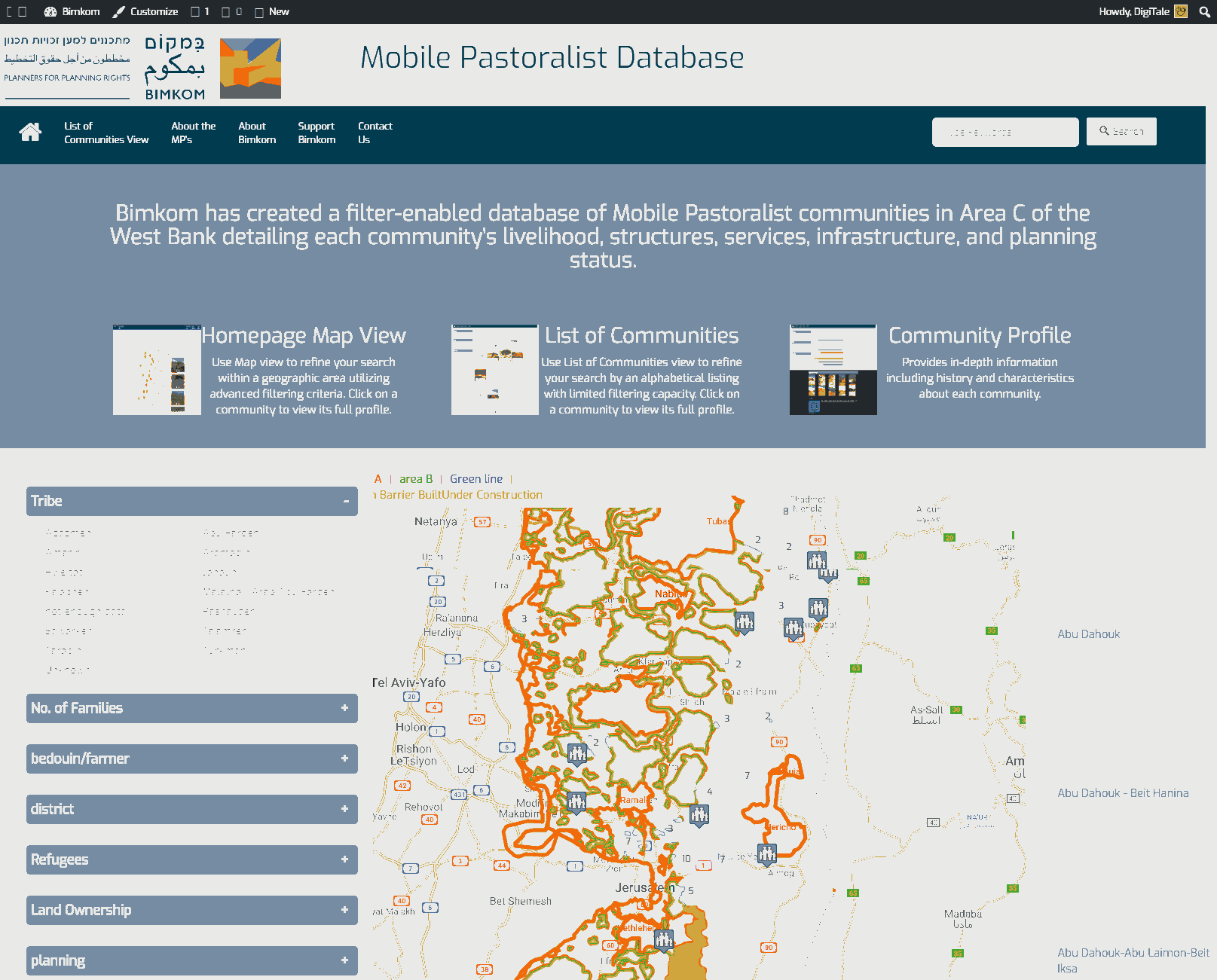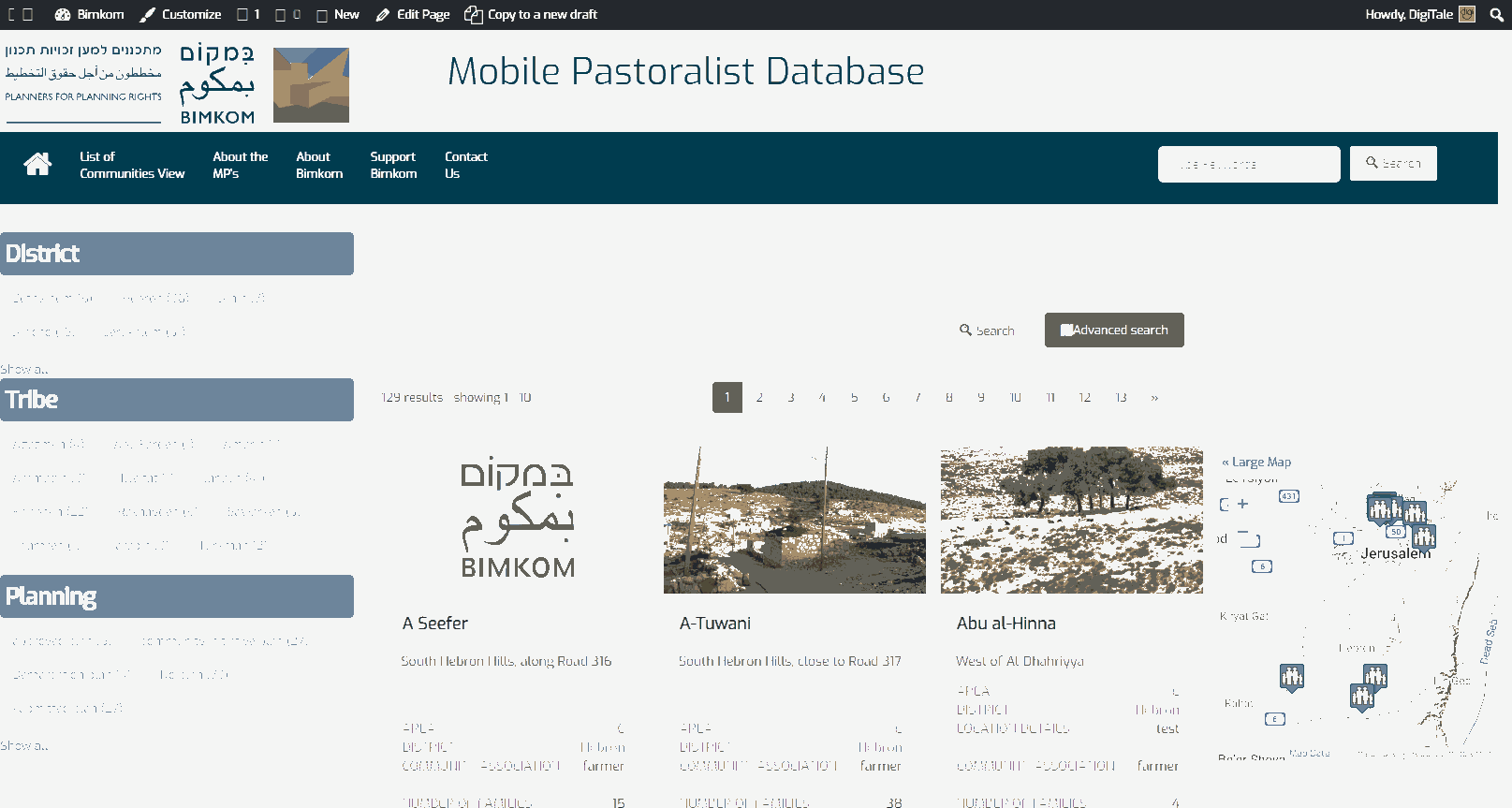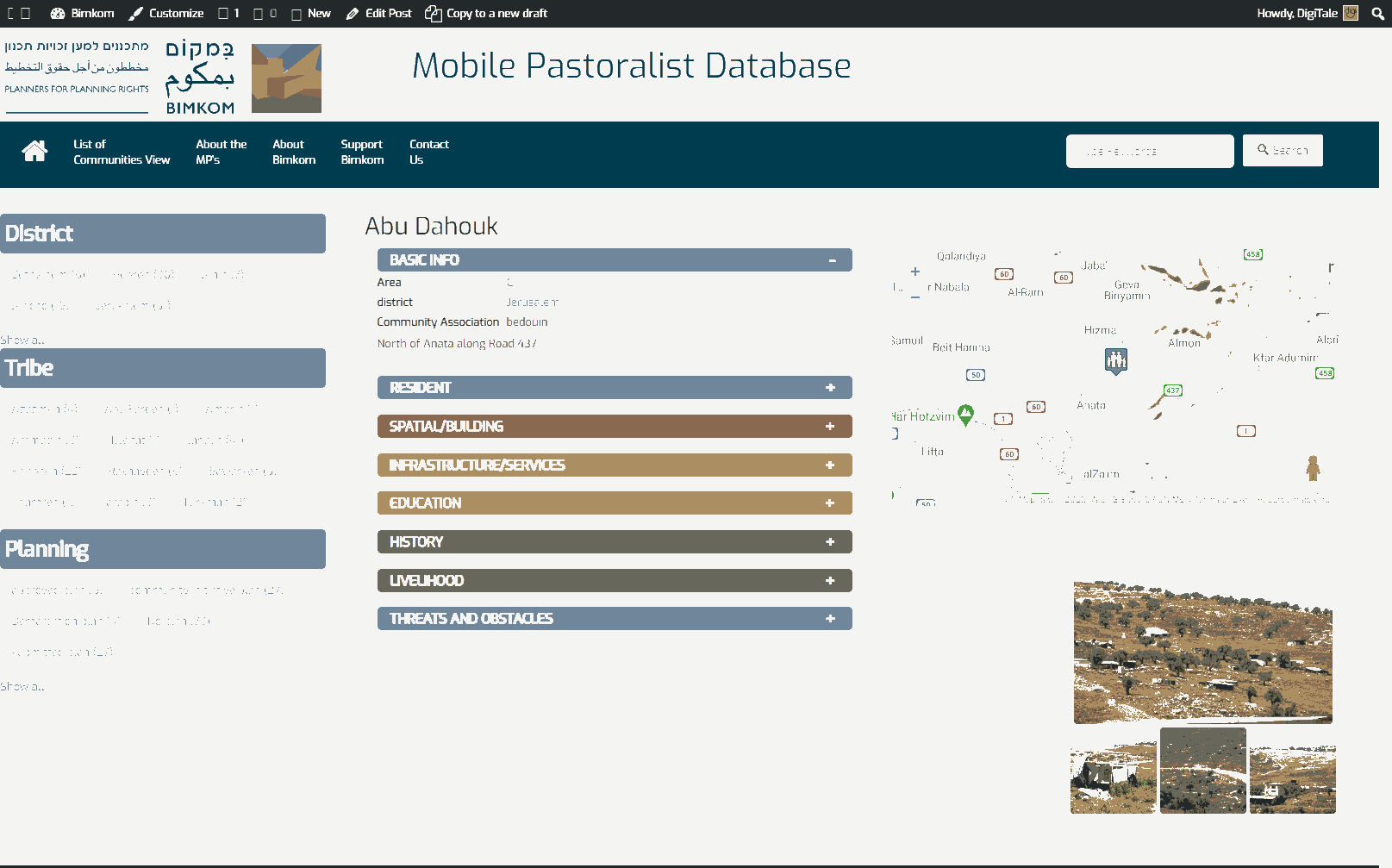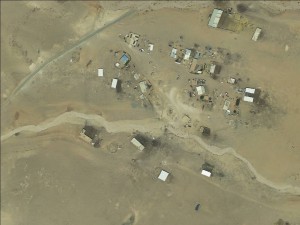Jordan Valley, along Road 449
Ras Ein al Auja- Jahalin
Resident
Number of Families
9
Tribe
testing the tooltip
Jahalin
Sub-Tribe
Zweidin
Names of Families
Ghawanmeh
Farmers Origin/Family
Tel A'rad - Bir Esabea' (Be'er Sheva)
Refugees
official refugee status
Spatial/Building
Land Ownership
private
Land Ownership - details
The land is all privately owned by families in Al-A'uja, the community does not pay any lease money
Planning
No plan
Structure Type
- tent
- tin shack
- wood
Infrastructure/Services
Access to Community
- pedestrian
- private vehicle
- public transit
Access to Community - details
Public transportation runs from A'uja. A bus provided by the PA collects the students of the community to schools.
Water Access
- authorized connection
- water tank
Water Access - details
The water that comes through the water pipe serves the herds. The community also buys water from Al 'Auja. Each family buys one water tank a day for the cost of 25 NIS.
They used to own water tanks but have received an order to take them down around the year 2000.
They used to own water tanks but have received an order to take them down around the year 2000.
Electric Connection - details
The community received solar panel from Ma'an center but these do not provide enough electricity and so they also use generators.
Health Care
- mobile clinic in community
- clinic in neighboring community
Health Care - details
A mobile clinic arrives to the village once a month. The closest hospital is in Jericho. The nearest clinic is in A'uja village.
Location of Services
Jericho and al Auja
Education
Kindergarten
No
Kindergarten - details
A kindergarten was opened for limited time and was run by women from the community. The donors stopped to fund it and no salaries were paid and so it closed down.
Location of School #1
Al 'Auja - UNRWA
general description [school #1]
- Boys
- Girls
- Primary school
- Middle school
Distances to schools [school #1]
1001 - 2000 meters
Location of School #2
Al A'uja - Goverment
Time to schools [school #1]
16 - 30 minutes
general description [school #2]
- Boys
- Girls
- High School
Time to schools [school #2]
16 - 30 minutes
Distances to schools [school #2]
1001 - 2000 meters
Location of School #3
Ein Asultan - UNRWA
general description [school #3]
- Boys
- Girls
- Primary school
- Middle school
- High School
Distances to schools [school #3]
more than 5001 meters
Location of School #4
Nuweia'ma
Time to schools [school #3]
31 minutes - 1 hour
general description [school #4]
- Boys
- Girls
- Primary school
- Middle school
- High School
Distances to schools [school #4]
more than 5001 meters
Location of School #5
Masqat
Time to schools [school #4]
31 minutes - 1 hour
general description [school #5]
- Girls
- High School
Distances to schools [school #5]
more than 5001 meters
Time to schools [school #5]
31 minutes - 1 hour
Schools - details
The students arrive to schools in Al Auja with a bus provided by the ministry of education. To Ein Asultan and Nweia'ma they need to reach the main road take public transportation from there.
Travel to school [school #1]
- bus
- difficult walk
Travel to school [school #2]
- bus
- difficult walk
Travel to school [school #3]
private car
Travel to school [school #4]
private car
Travel to school [school #5]
private car
Accessibility to school [school #1]
3
Accessibility to school [school #2]
3
Accessibility to school [school #3]
6
Accessibility to school [school #4]
6
Accessibility to school [school #5]
6
History
History
Originally they came from Bir Esabea' (Be'er Sheva). After their expulsion in 1948, they have been in continuous movement searching for natural resources, water and grazing lands. They moved to Hebron and from there to the Jerusalem periphery and to Jericho. In 1981 they arrived to Ras Ein al Auja.
livelihood
Seasonal Movement
no
Community Initiatives
tourism
Other Occupation
- shepherding
- herd without shepherding
Main Occupation
- shepherding
- herd without shepherding
Woman's Occupation
- taking care of the herd
- taking care of the kids
- housekeeping
General Livelihood - details
The community feed their herd without shepherding for most of the year, with the exception of March and April. Feeding costs are 130 Dinars per sheep per year. The community owns about 300 sheep.
The women in the community make dairy products daily, and these are sold in Ramallah and nearby villages.
The women in the community make dairy products daily, and these are sold in Ramallah and nearby villages.
Threats and obstacles
Threats and Obstacles
fjfxjsfjsyjsyj
- firing zone/closed military zone
- nature reserve
- close to settlement
- settler violence
Threats and Obstacles - details
The army sometimes come at night to the community to search. The community reports that the settlers from the nearby settlements have intimidated shepherds and have stolen, shot and killed several sheep and donkeys.
Number of Demolition Orders
0
Number of Demolitions
0
Demolitions - date of update
September 17, 2010




